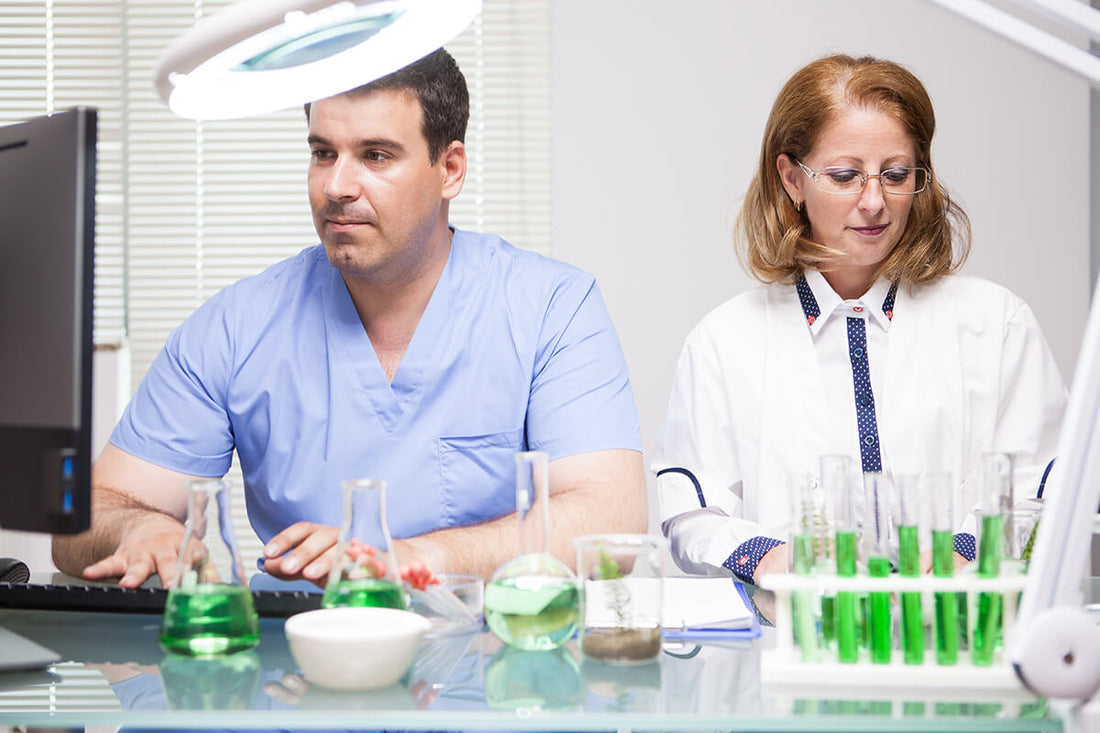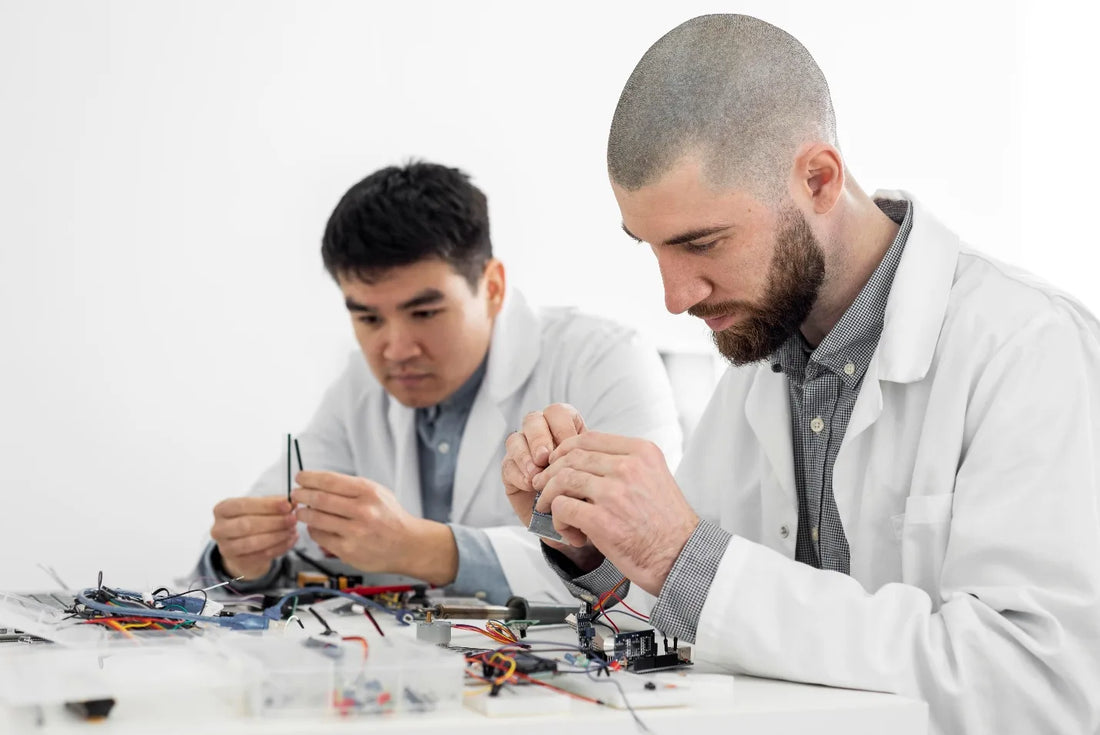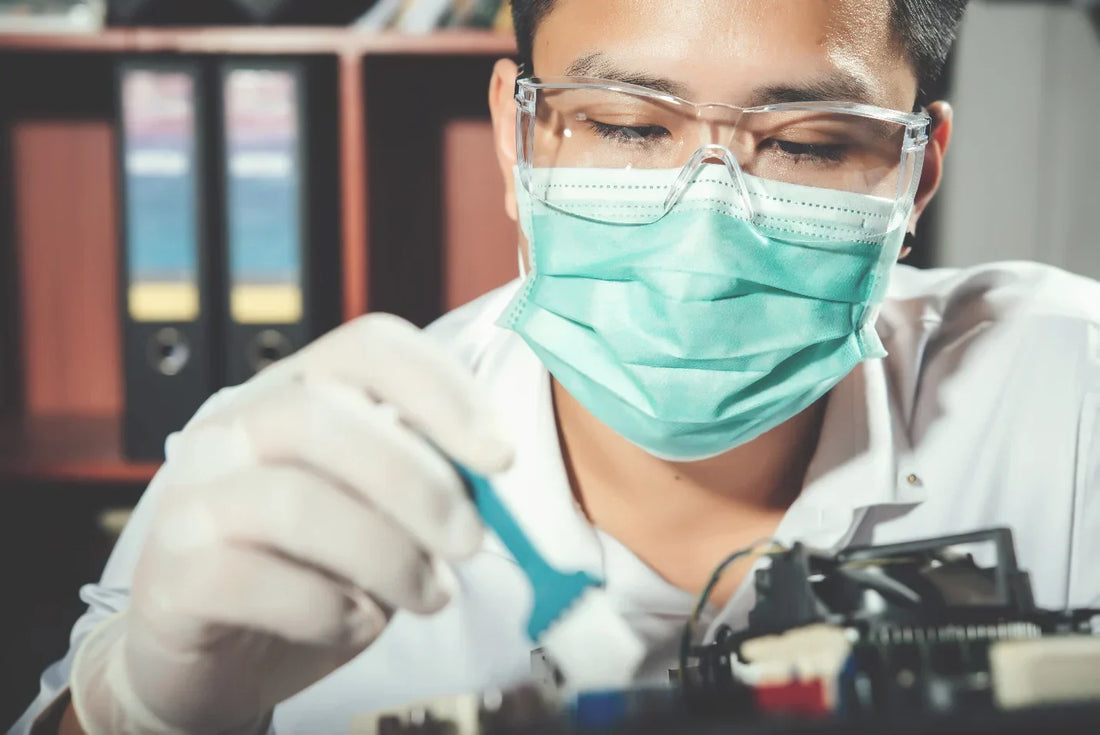Smart Labs, Smarter Savings: Where to Buy Used Laboratory Equipment?

Summary:
Buying used or refurbished lab equipment can save labs 50–70% while still providing access to high-quality, reliable instruments. When purchased from a trusted supplier like R&D Laboratory Equipment, used lab gear is inspected, certified, and supported with warranties—helping labs cut costs, avoid long lead times, and reduce environmental impact. This guide outlines key buying tips, common mistakes to avoid, and the best places to find and sell used lab equipment in San Diego and beyond.
Introduction
Why spend a lot on new laboratory equipment when you can save 50-70% by purchasing used equipment?
Buying refurbished lab equipment can offer significant savings while maintaining access to high-quality instruments. However, it is important to approach the process carefully, as purchasing used equipment comes with risks, such as equipment malfunctions, outdated technology, or missing warranties. Understanding the right balance helps you balance cost savings with your lab's efficiency.
In this article, we will delve into the world of refurbished lab equipment and provide guidance on where to buy high-quality equipment that meets your research needs.
Why Choose Used or Refurbished Laboratory Equipment?
Regardless of the field of study you are engaged in, all labs share a common problem: limited resources. A laboratory’s equipment shouldn’t restrain their progress in research and development. One of the best ways to invest in lab equipment is by purchasing used equipment from a reliable supplier. Here are some benefits to buying used laboratory equipment:
1. Cost Savings
The most obvious benefit of buying second-hand lab equipment is the cost. Second-hand equipment is about 50-70% cheaper than brand-new equipment, meaning laboratories can afford equipment they wouldn’t otherwise be able to while saving funds for other essential activities.
2. Quality and Reliability
A common misconception about used lab equipment is that they are low-quality. While some suppliers might sell low-quality equipment, you can trust R&D to do better. Our refurbishing process includes in-depth inspection, cleaning, and any necessary repairs to ensure the proper functioning of the equipment.
3. Time Efficient
Most original equipment manufacturers (OEM) have long wait times, sometimes exceeding six weeks. This can be bad for your business, especially if you operate on a deadline.
4. Sustainability
Buying refurbished laboratory equipment reduces your lab's carbon footprint, eliminates the need for new raw materials for manufacturing, and reduces the risk of lab equipment ending up in landfills.
Key Considerations Before You Buy Used Lab Equipment

While buying used equipment is the less expensive option for laboratories, such practices come with risks. Here are some things you should consider before buying used lab appliances:
1. Research the Seller
Spend time researching the seller before committing to a purchase. Check their website and online reviews to see what previous buyers say about the quality of their products.
2. Check the Condition of the Equipment
Look for signs of neglect, damage, wear and tear, or missing parts. In your assessment, remember to ask for the equipment’s repair history and maintenance records.
3. Ask for Warranty
Determine if the equipment has a valid warranty. If it does not, ask the supplier for a warranty period. R&D Laboratory Equipment offers a 90-day warranty on all sales.
4. Look for Certifications
Verify if the equipment has any certifications. This will give you confidence that the equipment is safe, reliable, and meets industry standards.
5. Safety and Regulatory Compliance
Verify that the equipment meets current safety standards, regulations, and guidelines. Check for safety certifications such as UL, CE, and CSA.
6. Compare Prices
Before buying, compare prices from different sellers to ensure a fair deal. Consider the total cost of ownership, including maintenance, repair, and upgrade costs. Also, don’t just go for the cheapest; consider the overall value and quality of the equipment.
Top Places to Buy Used Lab Equipment
When sourcing used lab equipment in San Diego, it is essential to consider authorized local sellers, reputable online marketplaces, and auctions. Here are some suggestions to get you started:
1. Authorized Used Laboratory Equipment Dealers
For reliable used scientific equipment, explore options from dealers authorized to sell refurbished products from the original equipment manufacturers (OEM). Some of our recommendations include American Instrument Exchange, PerkinElmer, and Thermo Fisher Scientific.
2. Online Marketplaces for Used Lab Equipment for Sale
Some online marketplaces for buying used lab appliances include:
-
R&D Laboratory Equipment
-
Amazon
-
Craigslist
3. Auctions and Direct Sales
Auctions are a good place to buy used scientific equipment at competitive prices, but those items are sold “as-is” so you should inspect them thoroughly.
You can also use direct sales platforms to connect directly with your buyers. Some auctions and direct sales agents include HiBid and LabTrader Direct.
How to Sell Used Laboratory Equipment Effectively?

If you are wondering how to sell used laboratory equipment; understand that the more information you have about the item for sale, the market, and the available platforms for reselling, the better your chances. Here are some strategies to help you sell your used scientific equipment better:
1. Determine the Equipment’s Value
Research the market to determine a fair value for your equipment. Some factors to consider when setting a price include age, condition, and the original purchase price.
2. Collect All the Pieces
You will get the most from a sale if the equipment is complete. Before going to a reseller or posting pictures online, you should ensure the equipment is not missing any parts.
3. Gather the Necessary Documentation
Collect all relevant documents, including user manuals, maintenance records, and calibration certificates. Also, ensure you have all information, including the equipment’s name, model number, and manufacturer.
4. Clean and Refurbish the Equipment
A clean and functional product helps you establish a good reputation among resellers and buyers. Ensure that all defective parts are repaired and the equipment is decontaminated.
Advantages of Refurbished Lab Equipment Over Brand-New Equipment
|
Refurbished Lab Equipment |
Brand New Equipment |
|
|
Cost Effectiveness |
50-70% cheaper |
More expensive |
|
Quick Setup and Availability |
Buying used equipment eliminates wait times and enables quick lab setup |
OEMs often have long wait lists, usually exceeding six weeks |
|
Eco-Friendly |
It keeps equipment out of landfills and prevents wastage and environmental contamination. |
It contributes to environmental contamination through industrial and mining activities necessary for manufacturing new equipment models |
|
Condition and Calibration |
Often requires refurbishment and decontamination |
In peak condition |
|
Warranty and Support |
Largely depends on the reseller. R&D offers ongoing support and a 90-day warranty on all products. |
Comprehensive warranty coverage and support. |
|
Compatibility |
Used equipment is not always compatible with modern lab infrastructure |
The equipment is always up-to-date on software, making them compatible with other lab equipment. |
|
Customization |
Few customization options |
Allows for broad customization |
Common Mistakes to Avoid When Buying Used Lab Equipment

1. Overlooking Equipment Specifications
Lab equipment is highly specialized, and even the slightest difference in specifications can affect lab results and functionality. For example, a centrifuge with insufficient speed or capacity can limit the type of experiments you can perform.
2. Not Verifying the Seller’s Reputation
A significant risk is falling victim to unreliable vendors. Sellers can provide incomplete or misleading information about the equipment's condition, origin, and warranty. Buying from such a seller can lead to expensive downtime and low-quality results.
3. Ignoring After-Sales Support and Warranty
Purchasing used equipment without considering after-sales support can lead to issues later. Lab equipment requires regular maintenance, calibration, and repairs to stay functional.
4. Overlooking Calibration and Certification
Whether you buy used or new, you must ensure the equipment is properly calibrated and meets industry and regulatory standards. Lack of calibration can lead to penalties, loss of reputation, and invalidated results.
5. Focusing Solely on Price
While cost is essential in purchasing decisions, focusing solely on the price without considering other factors can lead to low-quality equipment.
Conclusion
Upgrade your lab equipment and make smart savings by leveraging the refurbished lab equipment market. By making informed decisions, your lab can reduce costs by 50-70%, support sustainable practices, minimize waste, and access a wide range of equipment options. Shop at R&D Laboratory Equipment for smart and reliable used equipment purchases.
FAQs
1. What are the benefits of buying used lab equipment?
Buying used lab equipment can reduce cost, minimize electronic waste, and provide access to a wide range of equipment.
2. Where can I purchase used lab equipment?
You can get used lab equipment for sale from dealers, online marketplaces, and auctions. For a streamlined and positive buying experience, you can also get reliable, high-quality refurbished equipment from the R&D Laboratory Equipment online store.
3. How can I ensure the quality and safety of used lab equipment?
Ask for maintenance, calibration, and certification records. This gives you confidence that the equipment meets safety and regulatory standards.
4. What should I check when inspecting used scientific equipment?
Check for signs of wear and tear, damage, neglect, and missing parts.
5. Do second-hand laboratory equipment purchases come with a warranty?
Not all used lab equipment that is for sale offer warranties for their products. However, some sellers, like R&D Laboratory Equipment, offer a 90-day warranty period for all purchases.
6. What kind of support should I expect from the seller?
Used laboratory equipment dealers often offer training, maintenance, repair, and troubleshooting services for all products sold.
7. What are the factors to consider when buying used lab equipment?
When buying second-hand lab equipment, key factors include price, warranty and support, technical specifications, the seller’s reputation, and maintenance and calibration history.
8. What are some smart strategies for buying used lab equipment?
Research equipment options, compare prices, negotiate with sellers, and consider certified equipment.
9. Which is better, used lab equipment or brand-new equipment?
Used lab equipment is more cost-effective, as it provides access to high-quality, reliable equipment at a low cost. Meanwhile, brand-new equipment takes more time to manufacture, is expensive, and contributes to environmental degradation.
10. What types of equipment can I buy used?
R&D Laboratory Equipment offers a wide range of products, including centrifuges, microscopes, biosafety cabinets, pipettes, etc.






